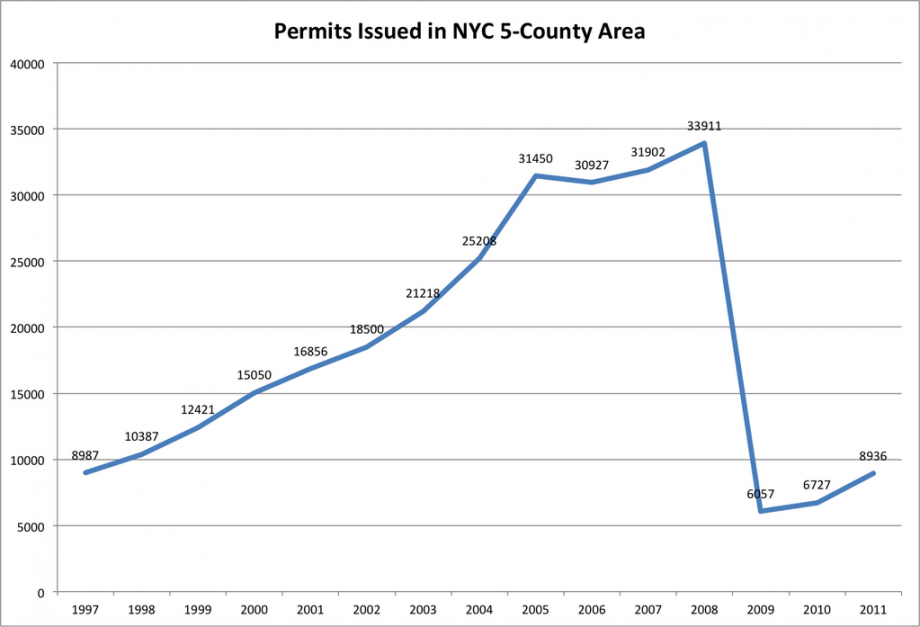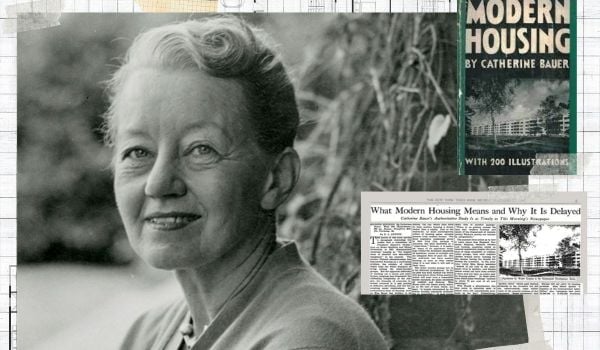Yesterday at The Atlantic’s CityLab summit, New York City Planning Department Director Amanda Burden caused somewhat of a stir with a few blunt remarks about gentrification and her inability to stop it.
“I had believed that if we kept building in that manner and increasing our housing supply… that prices would go down,” Burden said, according to Sarah Goodyear at The Atlantic Cities. “We had every year almost 30,000 permits for housing, and we built a tremendous amount of housing, including affordable housing, either through incentives or through government funds. And the price of housing didn’t go down at all. That’s a practitioner’s point of view.”
Her statement could be seen as a rebuke to those who have argued that New York’s housing woes are a basic problem of supply not meeting demand — an argument beloved by economists (and even a certain left-leaning mayoral candidate) and generally dismissed by affordable housing advocates. But Burden got at least one basic fact wrong.
New York City did not issue permits for 30,000 new units “every year” of the Bloomberg administration. According to Census data, the city permitted more than 30,000 new units each year (for everything from apartments to single-family homes) from 2005 through 2008, with more than 25,000 units permitted in 2004. But from 2000 to 2003, the number ranged between 15,000 and 21,000. And it dropped off a cliff starting in 2009, with the total number of permits issued each year since never cracking 10,000.
So between 2000 and 2011, the city actually permitted about 247,000 units in total, or a little more than 20,500 each year.
Furthermore, permit data overstates the amount of actual construction, as not every unit permitted is ultimately built. From 2000 through 2008, 225,000 units were permitted. Only 170,000 were actually built, according to New York University’s Furman Center for Real Estate and Urban Policy.
According to classical economic theory — which Michael Bloomberg and his administration once embraced, but which Burden now seems to now doubt — it’s not supply that staves off price increases, but supply meeting demand. Demand for housing in a particular city can be difficult to estimate, but New York hasn’t gotten any less desirable compared to the rest of the U.S. over the past decade. It seems reasonable to assume that at a minimum, the demand for housing is equal to the nation’s population growth rate. (In reality, New York would almost certainly have to build more than this to keep up with demand, both because of its rising “stock” and because of its suburbs’ even more pitiful housing production numbers.)
From 2000 to 2011, the U.S. population grew 10.4 percent. Local housing data isn’t generated each year, but in 2011 the New York City Housing and Vacancy Survey found that the five boroughs had a total of 3.35 million housing units, up from around 3.2 million in 2002.
If New York City’s housing stock had been growing at the same rate as the national population, the city should have added more than 30,000 units each year. In other words, the city should have kept up its boom-time growth for Bloomberg’s entire administration, rather than just the four or five most exuberant years.
It’s certainly possible that allowing “tremendous” amounts of development, in Burden’s words, would not be enough to stave off price increases and gentrification. But we can’t know that until we actually try. Until now, New York City hasn’t tried.
Stephen J. Smith is a reporter based in New York. He has written about transportation, infrastructure and real estate for a variety of publications including New York Yimby, where he is currently an editor, Next City, City Lab and the New York Observer.
















